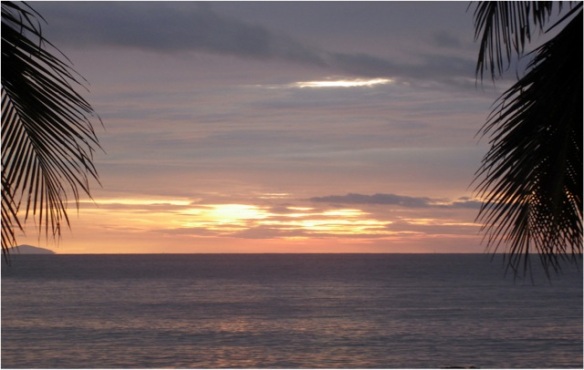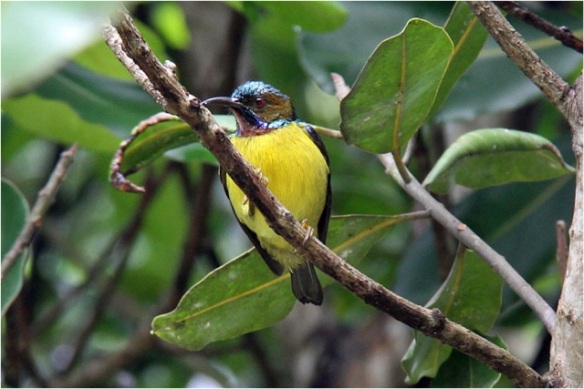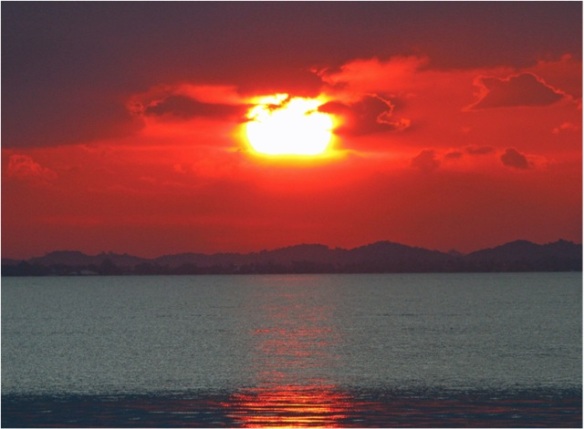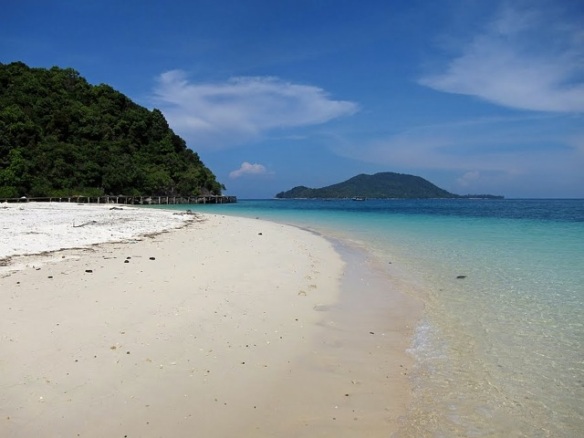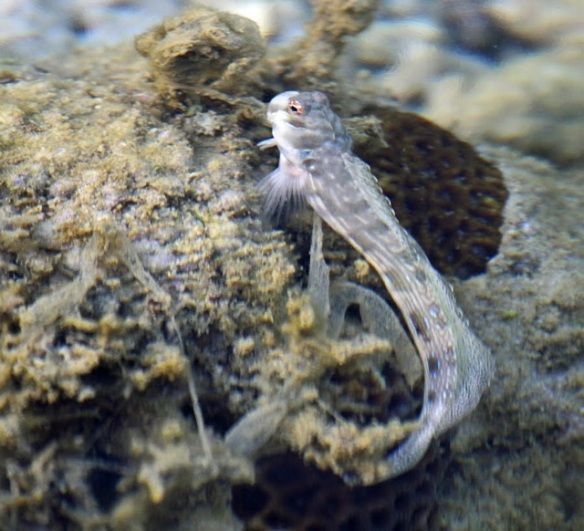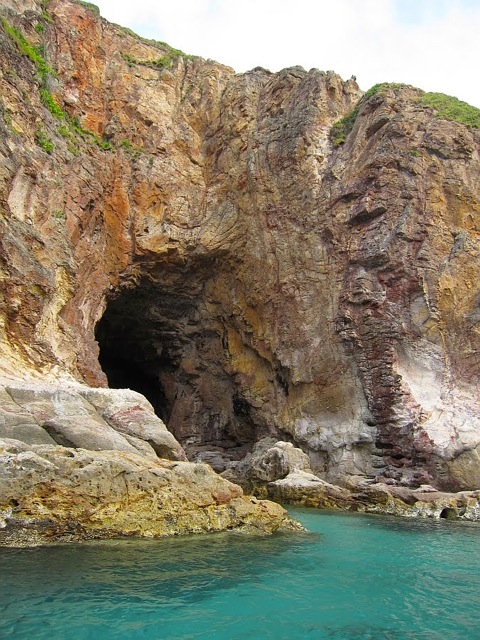Simon Buckell, our resident Naturalist at Ökologie, takes you on a virtual guided tour around Tengah Island introducing some of the island’s wildlife as he goes and pointing out the best places to spot a turtle or five!
Back in June last year I was asked if I would like to join the (then BRISC, now Ökologie) team on Pulau Tengah at its early stages to carry out avian and marine wildlife surveys. This kind of opportunity does not come along often and so of course I jumped at the chance and arrived on the Island in September.
During my short but enjoyable time on the Island (7 weeks) we observed and recorded 105 different species of bird on and around the island. Some of the Interesting species included Brown Booby, Christmas Island and Lesser Frigatebirds, Bulwers Petrels, Sooty & Bridled Terns, Red Necked Phalaropes, Nicobar Pigeon, Grey Faced and Oriental Honey Buzzards, Japanese Sparrow-hawks, Black Bittern and a Hoopoe. Common sightings included the colourful Brown Throated Sunbirds, Pied Imperial and Pink Necked Green Pigeons, Black Naped Orioles, White Rumped Sharma’s, Brahminy kites and White Bellied Sea-Eagles that drift lazily in the pale blue skies above.
Several pelagic surveys provided early indications that marine life is rich in the surrounding waters with 3 species of Turtle seen which included Hawksbill, Olive Ridleys and the most numerous being Green Turtle. Dolphins are always a privilege to encounter and I had suspected that they could be in these waters but maybe difficult to locate so when a small pod of 7 Indo Pacific Bottle Nosed Dolphins with a young calf appeared during a routine pelagic trip this proved the importance to both the surrounding waters and our surveys. Otters have been seen just offshore from the main resort beach as well Turtles, Dugong and a Frasers Dolphin that graced the presence of the lucky few present one afternoon. The list of wildlife is getting longer as the surveys continue but for the purpose of this blog post I thought I would take you for a “virtual” guided tour of the island.
Starting off from the back of the resort area you walk up the small hill and then descend along and in to the forest trail. At first all appears to be quiet but by standing still, being quiet and listening, it is not long before you hear the calls of birds such us that of a White Rumped Sharma, Magpie Robins or even a Mangrove Whistler with a bit of luck. Then as the walk continues you will reach the first viewing area of the eastern side of the island. Here you can take in the scenic beauty that surrounds Batu Batu with the islands of Pulau Tioman, Pemanggil and Aur all clearly visible in the distance. As you continue your walk the forest becomes slighter darker with the dappled rays of sunlight shining through the open areas of the canopy above. Stopping en route and again by listening and looking, species of colourful birds such as Warblers, Sunbirds, Orioles and more can be seen. Not before long you reach the main observation point where again another scenic view awaits you at an elevation of 54 meters above sea level. This time you are at the north face of the island over looking the island of Pulau Rawa and the smaller surrounding islets. Here you can sit down and enjoy the view with some chilled fresh fruit and a refreshing drink and wait to see what aerial species of bird pass over head. Here the list can be impressive with species of migrating Raptor, (diurnal birds of prey) such as Hawks, Eagles and Buzzards with Swifts and Swiftlets, Beeaters, and colourful Black Naped Orioles all having been recorded throughout the survey period.
As the trail continues you begin your descent where you arrive over-looking the fresh water marsh area to the south of the trail and then you will arrive at the far end of North Beach. Depending on the state of the tide you will now begin to encounter different species of resident bird such as the colouful Collared Kingfishers, Pacific Reef Egrets, Blue Heron, Common Sandpipers and other species of wading birds
A quick look at the marsh area will reveal more resident species such as Dollar-Birds, Pied Imperial and Pink Necked Green Pigeons along with more Orioles present and maybe something more interesting like a Black or Yellow Bittern (again both species were recorded during the assessment surveys). Here there are also always many colourful dragonflies and butterflies resting up on the stems of grass on the water’s edge.
As you continue walking you are soon at the join of North & Long beach Beach where the waters are perfect for a paddle or swim.
The area just offshore is of open sea grass and so is an important area for turtles to feed. Grab your mask and fins and take a snorkel if you wish. Here the small, playful and colourful Clownfish may approach close to “investigate” you if you swim in their direction. Or just take it easy sitting under the shade of one the trees and take in the beautiful view but always remember to keep an eye out for those turtles! Depending on the time of year numbers will fluctuate depending the their nesting cycle and you may see one, two, three or more as they come up to the surface for an in-take of air before dropping beneath the surface to feed. We had five Green Turtles all visible at the surface one afternoon as we sat there taking in the view.
As you complete the final stage of your round-island walk you will reach the Ökologie centre and island Beach Bar where our team of researchers and divers will be on hand to answer any questions you have. There is also a small reference book library available for your use.
As you head back to the resort area take in a cold drink of your choice at the restaurant bar, sit in the shade over looking the bay just beyond the reef. It is here where you can see a varied selection of bird and marine life. This area is also good for turtle sightings and otters have been seen feeding and playing in the area as well a Frasers Dolphin and Dugong.
Hope to see you on Pulau Tengah some time soon.
Simon
Simon left our island and Malaysia in November 2011 and followed the birds migrating south. Since then, he has been in New Zealand and most recently in North Western Australia on a Wader ringing expedition. He will be returning to Batu Batu and Pulau Tengah in two weeks time as our resident Naturalist. The guided nature walk will be one of the Ökologie activities available at Batu Batu. Read more about Simon’s travels on his blog.

